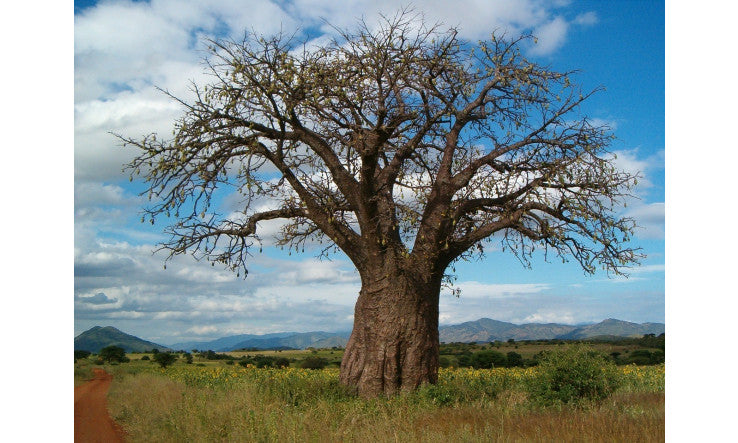The baobab (Adansonia digitata L.), a majestic tree, is found widely in the forests and savannas of sub-Saharan Africa. The baobab fruit is widely consumed there as it contains high nutritional value and provides a source of income for rural populations. The reported nutrient contents of different parts of the baobab show a wide variation, which may result from various factors: 1,2,3,4
- Baobab pulp is particularly rich in vitamin C.
- These leaves are particularly rich in calcium and are known to contain good quality protein.
- Whole seeds and grains have a relatively high fat content.
- Both the pulp and leaves exhibit antioxidant properties with higher activity in the pulp than in the leaves.
- Baobab fruit pulps were found to be rich in procyanidins (anti-inflammatory) and flavanol glycosides (antioxidant and anti-inflammatory), with tiliroside (antidiabetic, hypolipidemic, antioxidant) being the main constituent. Baobab leaves showed a similar profile compared to fruits, but with more phenolic compounds detected.
- Baobab shell and fibrous filaments are sources of polyphenols and antioxidant dietary fiber.
- Baobab fruit is rich in dietary fiber and polyphenols and can therefore increase satiety. It may reduce hunger, possibly having a positive effect on weight maintenance.
References:
1. Monteiro S, Reboredo FH, Lageiro MM, Lourenço VM, Dias J, Lidon F, Abreu M, Martins APL, Alvarenga N. Nutritional Properties of Baobab Pulp from Different Angolan Origins. Plants (Basel). 2022 Aug 31;11(17):2272. doi:10.3390/plants11172272. PMID: 36079651; PMCID: PMC9460372.
2. Chadare FJ, Linnemann AR, Hounhouigan JD, Nout MJ, Van Boekel MA. Baobab food products: a review on their composition and nutritional value. Crit Rev Food Sci Nutr. 2009 Mar;49(3):254-74. doi:10.1080/10408390701856330. PMID: 19093269.
3. Braca A, Sinisgalli C, De Leo M, Muscatello B, Cioni PL, Milella L, Ostuni A, Giani S, Sanogo R. Phytochemical Profile, Antioxidant and Antidiabetic Activities of Adansonia digitata L. (Baobab) from Mali, as a Source of Health-Promoting Compounds. Molecules. 2018 Nov 27;23(12):3104. doi:10.3390/molecules23123104. PMID: 30486448; PMCID: PMC6321735.
4. Chiacchio MF, Tagliamonte S, Visconti A, Ferracane R, Mustafa A, Vitaglione P. Baobab-Fruit Shell and Fibrous Filaments Are Sources of Antioxidant Dietary Fibers. Molecules. 2022 Aug 29;27(17):5563. doi:10.3390/molecules27175563. PMID: 36080328; PMCID: PMC9457770.
5. Garvey R, Clegg M, Coe S. The acute effects of baobab fruit (Adansonia digitata) on satiety in healthy adults. NutrHealth. 2017 Jun;23(2):83-86. doi:10.1177/0260106017704361. Epub 2017 Apr 17. PMID: 28413912.
Note: Hyperlinks to other sites are not updated continuously. It is possible that a link may no longer be found. Please use the search tools to find the desired information.
*Maison Jacynthe disclaims all liability. All information contained in this article is not intended to replace justified allopathic treatment or to disregard the expertise of the medical profession. It is up to each individual to take charge of their own health, to inform themselves, and to make the necessary changes to improve their condition. Therapeutic supervision by a qualified health professional is strongly recommended.


































































Leave a comment